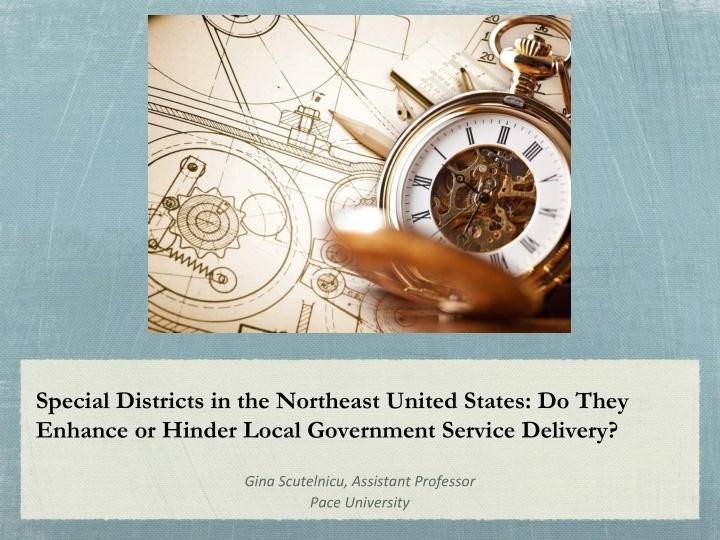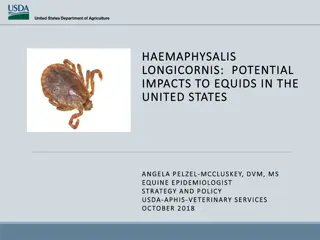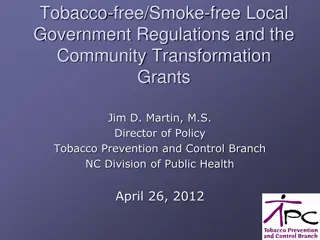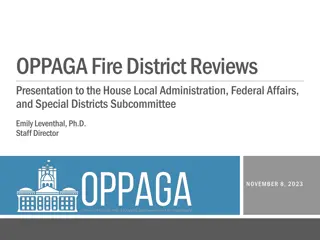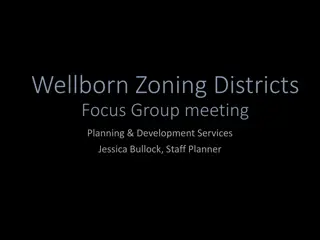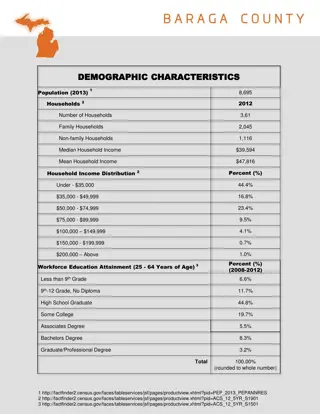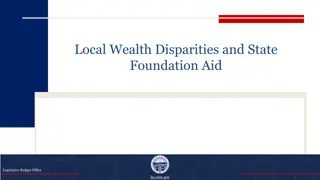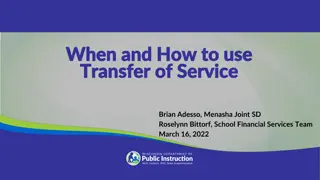Special Districts in the Northeast United States: Enhancing or Hindering Local Government Service Delivery?
Special districts in the Northeast US, independent units of local government, professionalize public service management. They have specialized functions, administrative and financial independence, and low political visibility. The study aims to develop a typology of multi-purpose special districts focusing on economic and community development. Different states classify and oversee these districts in various ways, impacting their performance and effectiveness.
Download Presentation

Please find below an Image/Link to download the presentation.
The content on the website is provided AS IS for your information and personal use only. It may not be sold, licensed, or shared on other websites without obtaining consent from the author.If you encounter any issues during the download, it is possible that the publisher has removed the file from their server.
You are allowed to download the files provided on this website for personal or commercial use, subject to the condition that they are used lawfully. All files are the property of their respective owners.
The content on the website is provided AS IS for your information and personal use only. It may not be sold, licensed, or shared on other websites without obtaining consent from the author.
E N D
Presentation Transcript
Special Districts in the Northeast United States: Do They Enhance or Hinder Local Government Service Delivery? Gina Scutelnicu, Assistant Professor Pace University
Special Districts Independent, special-purpose units of local government Professionalize public services management Single vs. multiple functions - 90%/10% Enjoy limited general and special powers Do not have planning and zoning powers
The Shadow Governments Characteristics: Narrow specialization Administrative and financial independence Geographic flexibility Low political visibility Status of SD Dependent vs. independent https://www.census.gov//govs/go/sd.html
Theoretical and Empirical Evidence Specialized vs. General-Purpose Governance Metropolitan reform theory vs. public choice theory. Consolidation vs. Fragmentation Do not differentiate districts Specialized governance less efficient than general- purpose governance (Berry, 2009; Foster, 1997; Mullin, 2009;) Economies of scale vs. economies of scope (Hooghe & Marks, 2003) Responsiveness, accountability and equity not rigorously investigated Efficiency operationalization variation special Contribution: How does service delivery occur at the local level? Develop a typology of SD based on state level data Assesses SD performance by function
Study Objectives Develop a typology of multi-purpose special districts based on state data (NE states) Special districts classification varies (Eger III, 2006; Foster, 1997; Porter et al., 1992) Consistent classification across state boundaries: Activity Creation method & oversight Status Structure
Multi-Purpose Special Districts Focus on economic & community development I. Economic development (BIDs) - 9 states Manage and fund street improvements; parking; sanitation; security; landscaping; marketing & special events etc. II. Community development (CDDs) - two states (PA & NY) Growth pays for itself Manage and fund new infrastructure improvements & maintenance; public utilities; recreation facilities and transportation-related services
Multi-Purpose Special Districts Contd SD centralized agency (NJ, NY & PA) Reporting information about SD finances - a formality Districts services are intended to supplement GP government services BIDs focus on commercial/industrial only CDDs focus on residential, commercial & mixed use
Districts Creation and Oversight Creation process: Petition method: petition of property/business owners public hearing ordinance or resolution of municipality Referendum method Public hearing method Duration: BIDs are time-limited or revised at certain intervals by municipalities CDDs as perpetual entities Annexation/incorporation issues
Managerial & FinancialAutonomy Contd Dependent: Appointed board of supervisors Generate own revenues with approval of GP govts.; municipalities issue bonds Under close supervision of municipalities Limits are placed on taxes/assessments
Managerial & FinancialAutonomy Independent: Elected board of supervisors (all CDDs) Generate own revenues - assessments, taxes, issue bonds Once established, no clear oversight Lack of coordination and cooperation between the general and the special-purpose governments File reports and budgets for information only
Conclusion Multi-purpose districts suitable for economic & community development functions Great variety - hidden side of government Few states keep track of their SD & require reporting enforcement Varying managerial & financial autonomy
Future Research Assess Accountability to Performance Assess multi-purpose districts nationally: Efficiency; Responsiveness; Accountability and Equity
